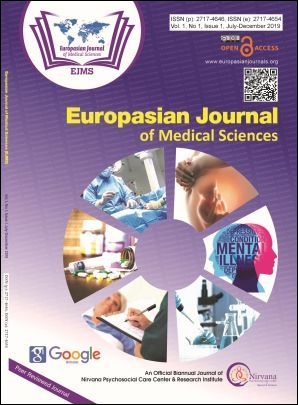Spinal Anesthesia for Removal of Thoraco-Lumbar Pedicle Screw
Keywords:
Spinal Anesthesia, Thoracolumbar, Pedicle Screw, Rural Set-upAbstract
Background: Spinal anesthesia compared to the general anesthesia has advantages of decreased blood loss, better cardiovascular stability, and postoperative pain control. This study was designed to evaluate pedicle screw removal at the lateral position under spinal anesthesia.
Methods: It is a prospective study done in patients with ASA (American Society of Anaesthesiologist) I and II with ages between 17 to 75 years of both sex admitted for pedicle screw removal surgery during the period March 2018 to April 2019 AD in Western Hospital and research center Nepalgunj. All patients were informed about the risk of conversion to general anesthesia in detail. Spinal anesthesia was given to all 83 patients who came for pedicle screw removal.
Result: Out of all patients 54% were from Hills and the remaining 46% were from Terai. The commonest cause of injury was fall from a tree which was in 48 (57.8%) out of 83 cases. The commonest level of injury was L1 followed by L2. The operation was completed under spinal anesthesia. None of the patients required conversion to general anesthesia. And 69 (83.1%) patients did not require any additional medications whereas the remaining 14 (16.86%) needed additional medications.
Conclusion: Spinal anesthesia is the safe and effective anesthetic technique for short duration spinal surgery eg pedicle screw removal in terms of perioperative events and in prolonged postoperative analgesia, as well as in terms of patient and surgeon’s satisfaction.
Downloads
Downloads
Published
How to Cite
Issue
Section
License
The author(s) retain the ownership of the copyrights for their work published in EJMS without any restrictions. Upon submission, the author(s) grants EJMS a license to publish, including to display, store, copy, and reuse the published content.
License to Publish
By submitting a manuscript to EJMS, the author(s) grant the journal a non-exclusive license to:
- Publish and distribute the content in all formats, media, and platforms (both existing and future), while identifying EJMS as the original publisher.
- Reproduce, display, and store the content in both print and online formats, including institutional and digital repositories.
- Translate, adapt, and summarize the work, including reprints, extracts, and abstracts.
- Develop derivative works based on the original content.
- Include the work in electronic databases and provide links to third-party materials.
Creative Commons Licensing
In addition to EJMS’s publishing rights, authors grant third parties the right to use, share, and distribute their work under the Creative Commons Attribution 4.0 (CC BY 4.0) International License. This allows unrestricted use of the content, provided proper attribution is given to the original author(s) and the journal.

